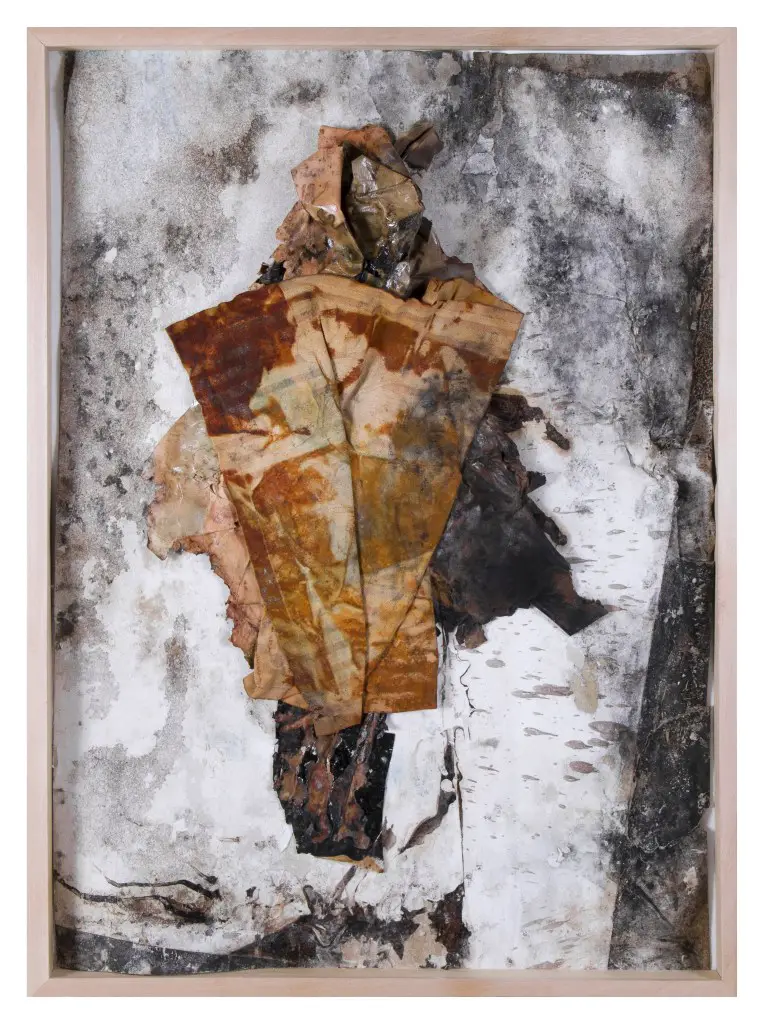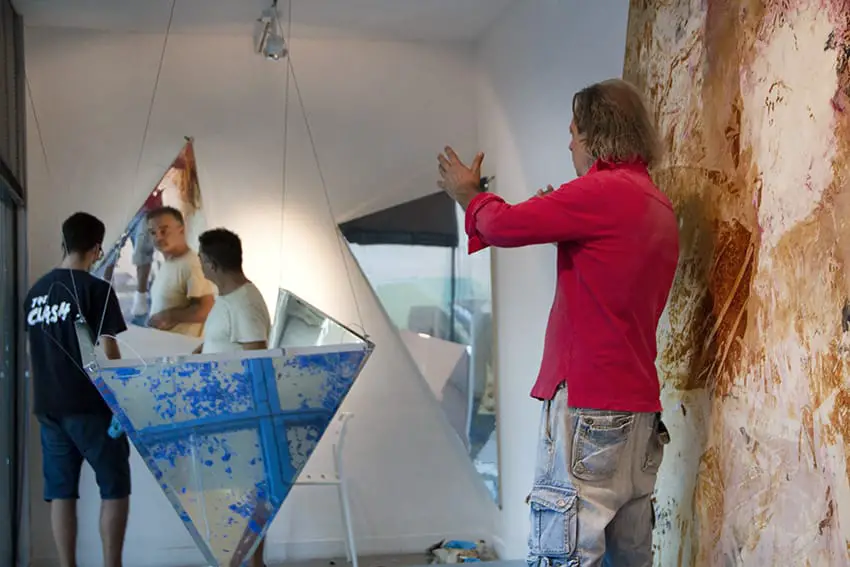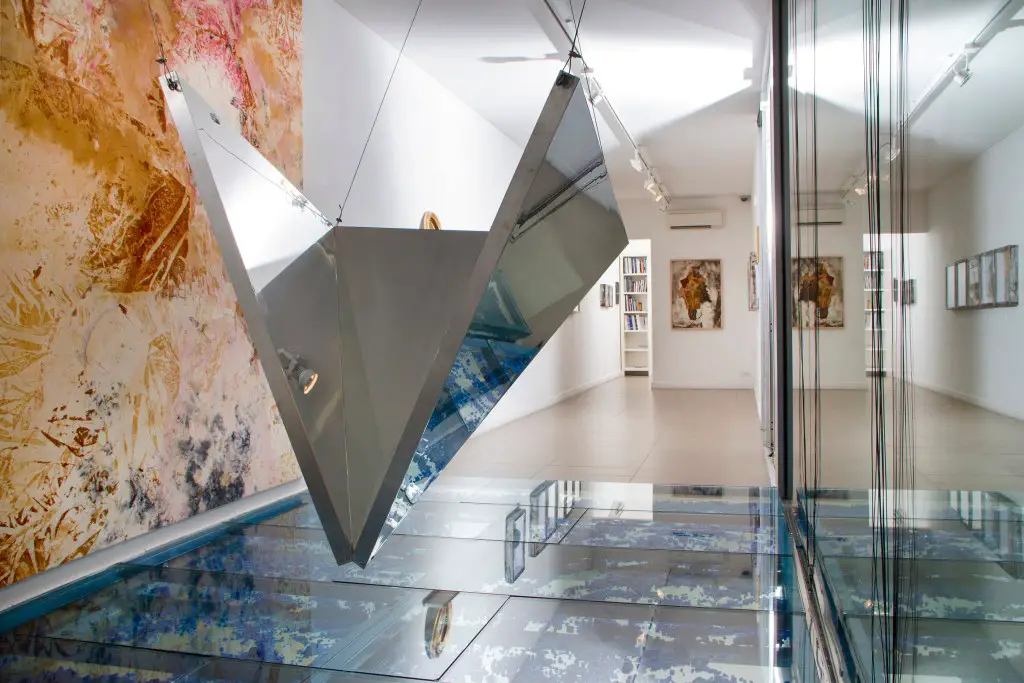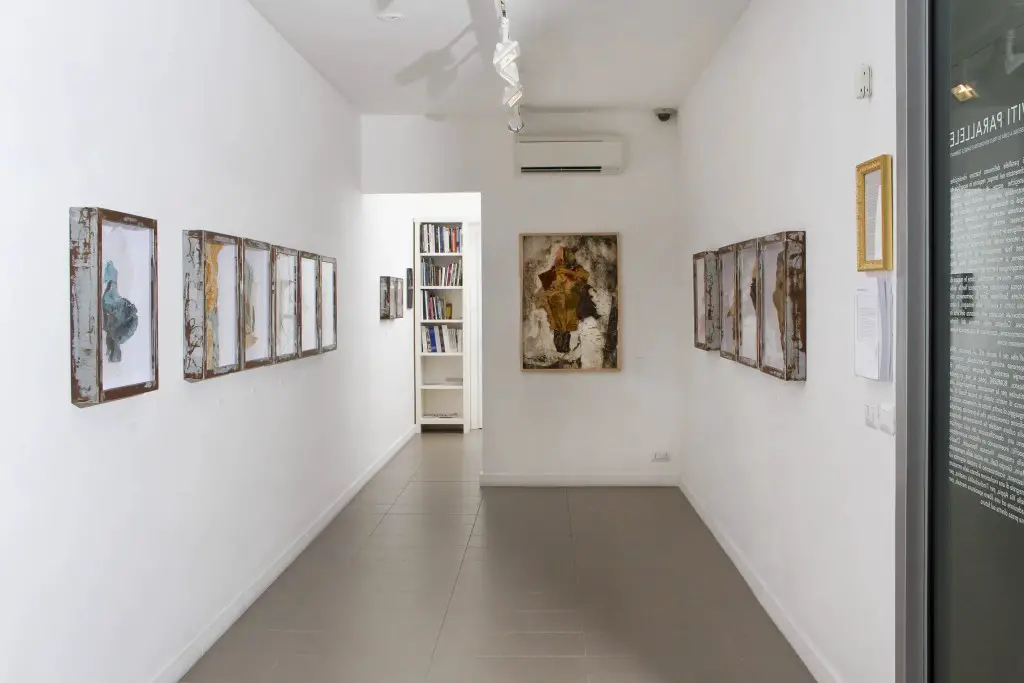We chatted with the artist Vincenzo Pennacchi, following his latest exhibition which was recently held at the Romberg Arte Contemporanea gallery.
di Claudia Stanghellini
Photo credits: Rubina Brugugnoli
The artist is one of those pardoned fortune tellers, one of those creatures capable of perceiving other truths behind the simple nakedness of things and manifesting them to the world with the work of their own hands. This is the secret of the fascinating and mysterious harmony it discloses Fairies, the last solo exhibition of the artist from Veliterno Vincent Pennacchi: sixteen medium and large format works, which were exhibited from 7 September to 28 November at the contemporary art gallery Romberg of Latina, as part of the exhibition Parallel screws, Edited by Italo Bergantini e Daniel Zerbinati.
While visiting it, we were mesmerized by the dreamlike atmosphere that pervades it, between the refracting of points of view and the games of glances, between the enigmatic smile of Oona, the queen of the fairies, and the dramaturgies of the court of fairies. An unexpected journey, well outlined by the pen of Lorenzo Pennacchi, whose unpublished story accompanies the visitor in his exploration within the exhibition:
"You have finally arrived." A voice echoes in the ears, a figure appears in the head. She is wrapped in a turban all over her body. "Who are you?" I ask without speaking. «I am the one who sees beyond things. And you are here to receive my gift ». Immediately afterwards he kisses my forehead, projecting me into a whirlwind of anthropomorphic faces […] strange little creatures come and go all the time: some have thin wings, others long beards, others still goat horns.
It is of the inhabitants of the Little People that we are talking about, mysterious beings, hidden from the gaze of the common man, who from the history of the times have inhabited folklore and popular culture. Fairies by Vincenzo Pennacchi, who takes its name from these sibylline creatures, thus assumes the features of Secret Kingdom sketched at the end of the seventeenth century by the Scottish Presbyterian Robert Kirk, that is a Fairyland in which the inhabitants of the Little People slyly scrutinize us behind their frames, a middle ground and contamination that lets the spectator disappear and allows the fairies to peep into the real world. Since the visit raised more questions than answers, we decided to ask the artist himself. What you will find here is the fruit of our nice chat.

Hi Vincenzo, thank you for agreeing to devote some of your time to us. To get started, tell us about the path that led you here today.
During my schooling, coming from a closed environment of peasant origin, I suddenly discovered the poetry, literature, ,. To please my parents I graduated from engineering electronics. In those years, he happens to be the Wisdom the two-year engineering classrooms were right next to the Ateneo Theater. So that after my lessons in mathematical analysis and physics, I sat next to the literature students to listen Eduardo De Filippo, Carmelo Bene e Jerzy Grotowski. Over the years, the latter has become a constant reference that led me then, almost at the age of forty, to start practicing the visual arts completely from self-taught.
How does the artistic creation process happen when you get to work? Are there any techniques you prefer and which constitute your stylistic code?
I've always imagined the studio as one's laboratory scientist and at the same time the alcove of a alchemist, where there is an awareness of the scientific method and at the same time the desire for pure experimentation, which does not conform to the laws of nature, rather trying to subvert them. My relationship with images is strongly characterized by this is experiential: I follow the traces that the material itself provides, to then develop the theme, giving rise to the form. The curiosity of wanting to experiment with different materials, from wood to iron, from canvas to paper, has seen the studio always include new spaces, which have gradually invaded the living environment as well. So the house changed into a kind of large workshop consisting of the tailor's shop, the area for painting paper and large canvases, as well as the spaces dedicated to the processing of sheet metal and those in which large metal sheets with a mirroring surface are processed and set up.

The mirror is an element that often recurs in your artistic production. In this regard, let's talk about your latest exhibition. How it was born Fairies?
The exhibition was born anticipating the lockdown phase. Already in the last months of 2019 I found myself living, in a state of voluntary self-isolation, with small fragments of paper that could suggest viruses, which then materialized in the form of anthropomorphic figures, always recurring in my pictorial work. Unlike the previous periods, however, they were not painted but manifested themselves as three-dimensional figures, a sort of minute sculptures of paper or canvas. Then, during a visit to the gallery owner's studio Italo Bergantini, it immediately emerged that those visual manifestations could generate a theme of interest. Having identified this awareness, in subsequent visits we gradually focused on the overall set-up. Thus began a team effort made up of silent confrontations, of looks aimed at identifying the direction to take. It must be said that we are in the fourth solo show with the gallery Romberg Contemporary Art. A partnership started in 2003 and which today wanted to make the previous path visible without ever dwelling on the past, on the already seen, indicating on the contrary a new development direction projected to the future.
From an artistic point of view, what is the principle from which the architecture of the exhibition developed?
The exhibition could be considered as one minimalist synthesis of the enormous amount of work that took place during these twenty years in museum environments, often also through installations of monumental dimensions that interacted with the space of deconsecrated churches. This stylistic figure of mine was theorized by the art historian and independent curator Gianluca Marziani with the term of expanded paint. Perhaps it is useful to report a synthesis of what he theorized:
[…] A painting that has an increasingly open form, a painting that is increasingly part of the physical space, of the landscape. A painting that uses the same poor and essential materials of these forms of housing, where you can really stay inside, where you can take refuge, you can meditate. But they are spaces that have their own semantic complexity where painting becomes floor, wall, tangible or hidden surface, but which becomes legible through mirrored walls, plays of light and color. With the original purity of forms which are then the archetypes of being, the archetypes of living […] Inside these archetypes the artist is conducting a very personal and recognizable research with increasingly complex results.
This premise on the expanded paint is necessary to understand the structure of the exhibition which, read in this way, unifies and incorporates both the paintings and the installation into a perceptive unicum inducing the viewer to move and interact uniformly in the space.

And to this it must also be added that the works are inserted within a narrative context, right?
Personally, I don't see the urgency of translating images (of the unconscious) with a verbal meaning, but I expect other professionals on my team to do so. As an artist, I focus on the visual aspect, verifying compliance with the rules necessary to read a work of art, that is: theoriginality (both in theme and in technique), the recognizability (as a manifestation of a path) and the consistency (which, while looking to the future, intrinsically contains the roots of history). I recognize the contextual need to read and direct the work, both in terms of artistic analysis, but also and above all by expanding its boundaries in terms of setting fantastic-literary, which goes to complete the vision. For Fairies the narrative context was engineered and shaped by my son Lorenzo who read the work independently, leaving me favorably surprised right away, by the ability to insert the works in a perfect interpretation system. A fantastic facility, built on a stratified substratum of influences, which also deeply impressed the gallerist-curator Bergantini. Thus, together with the equally young curator Daniel Zerbinati, author of a valuable press release, Lorenzo was involved in the Review with the creation of a story capable of fully giving voice to this substratum.
"Welcome to Tat'elen, human." I see myself projected onto the cave walls from multiform perspectives. "You are in the presence of Oona, the queen of the fairies." I am fragmented. "From today you will abandon your old life and embrace a new one." As my body shrinks, a pair of fragile wings sprout between my shoulder blades. "You are a servant of the secret realm now." Reflected in a small side mirror, I no longer recognize myself. Before opening my eyes, once again.

